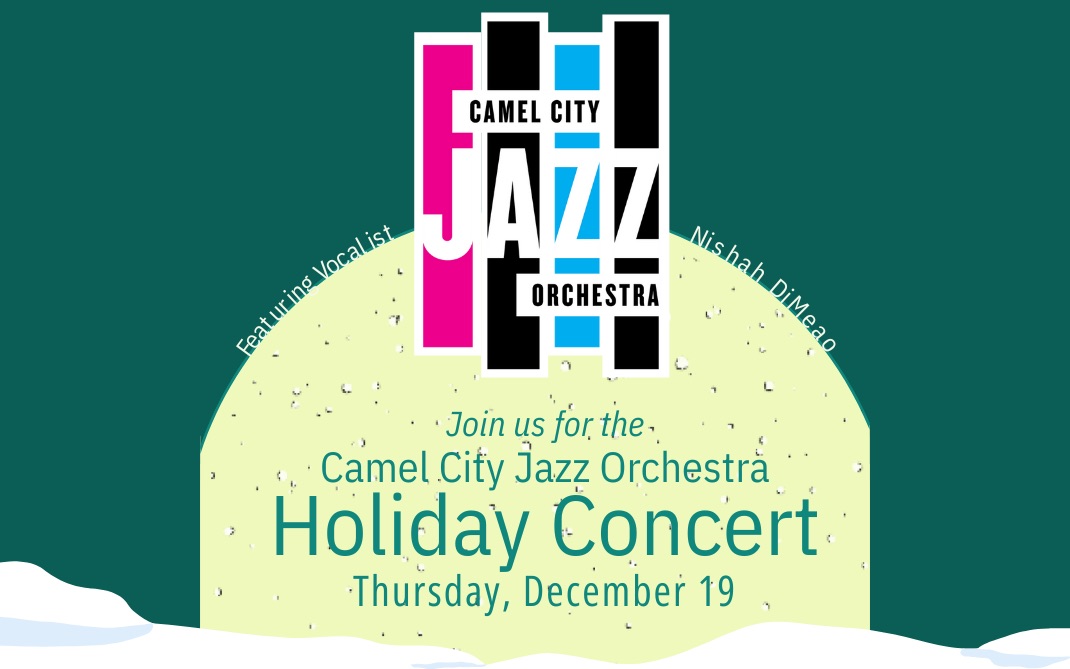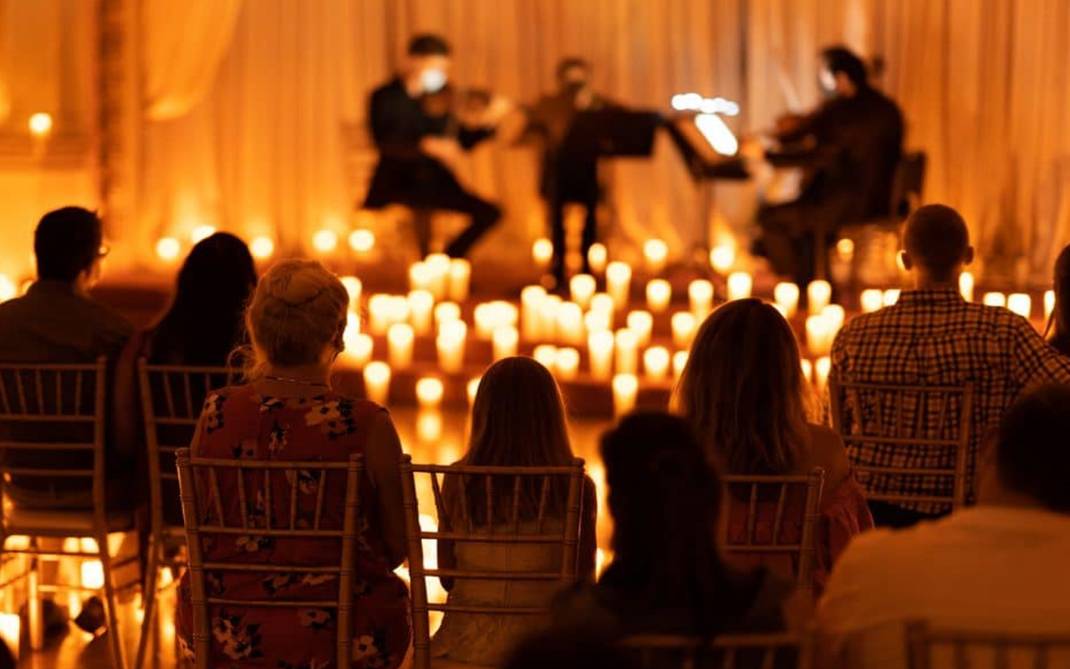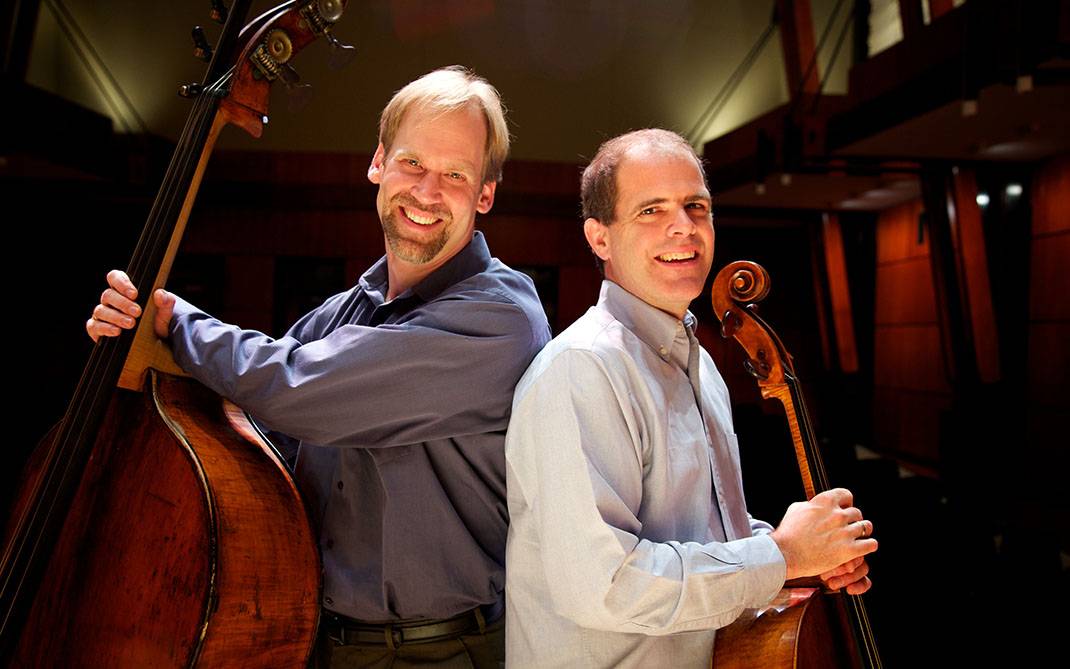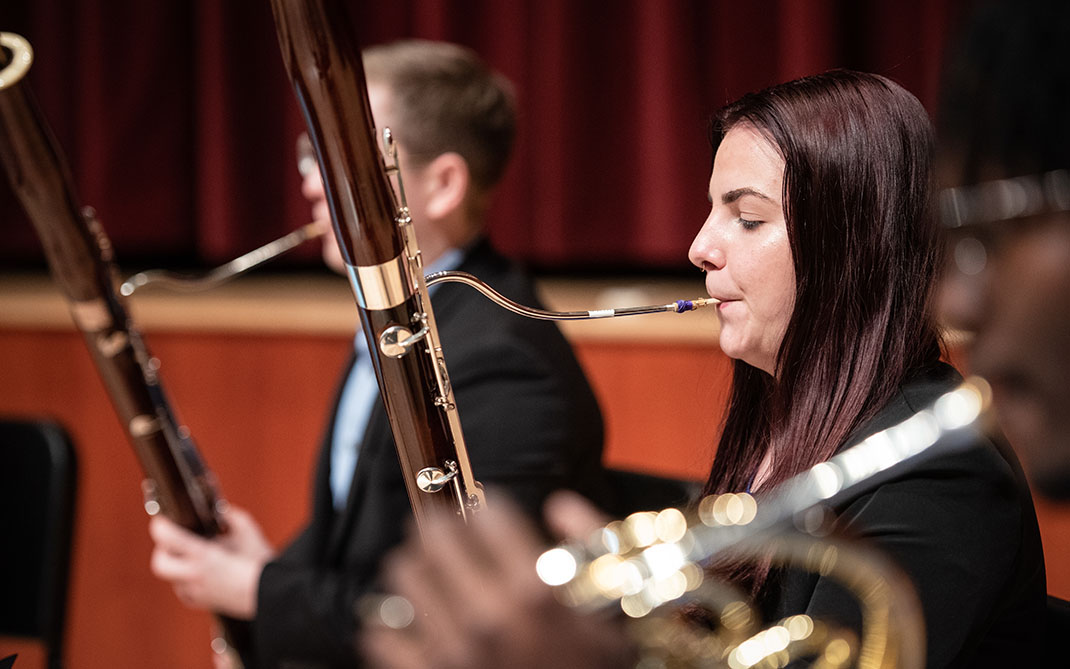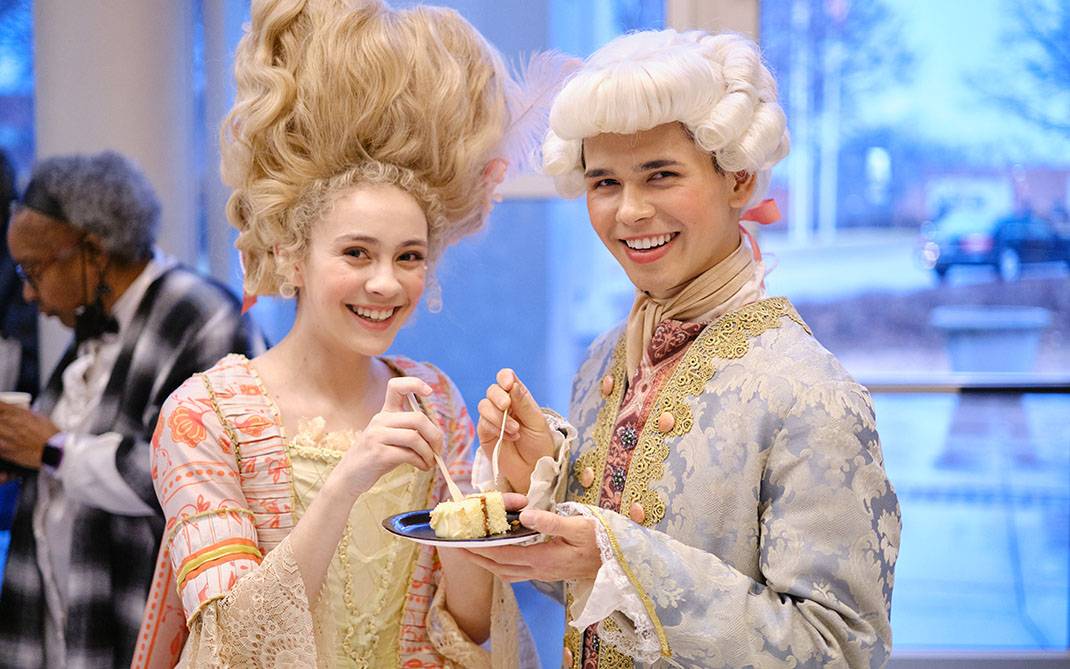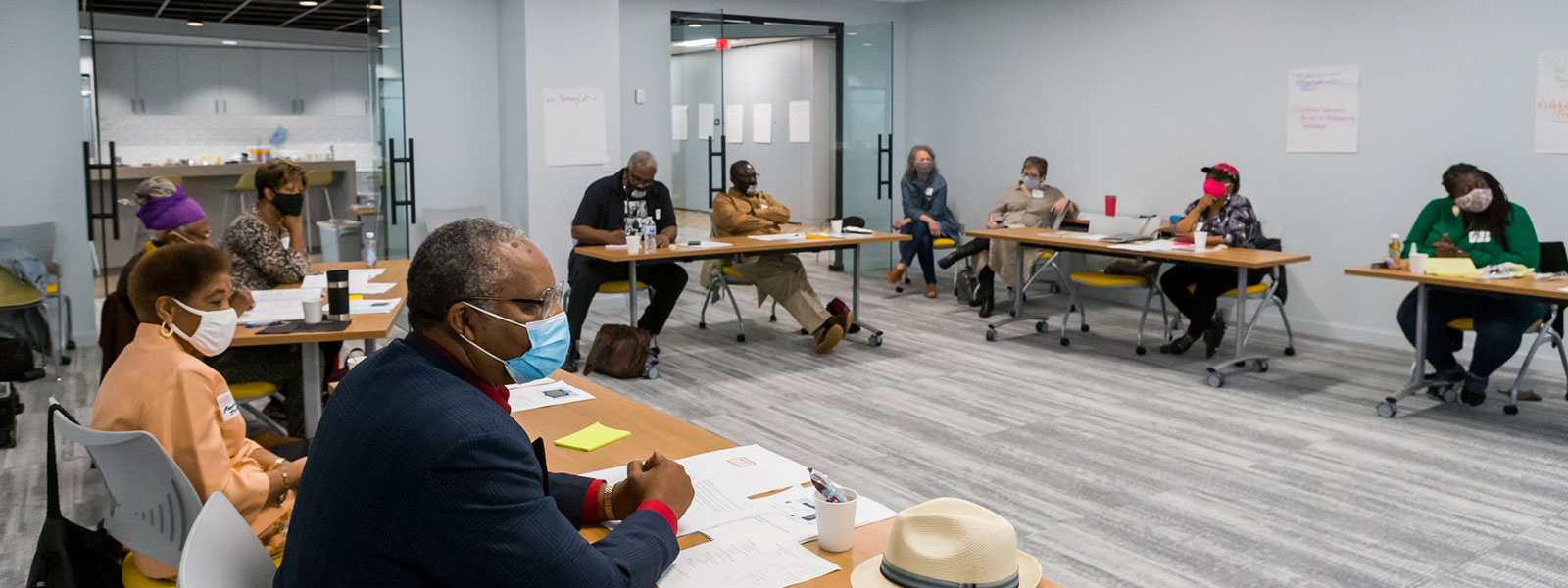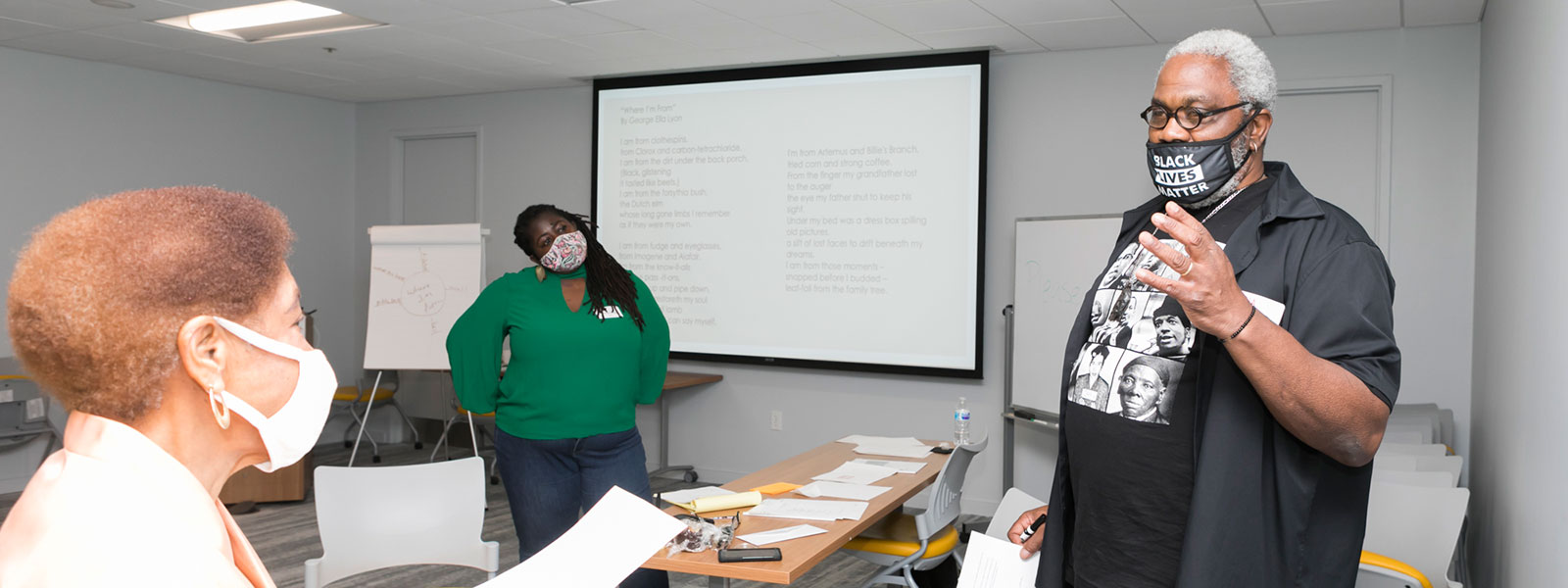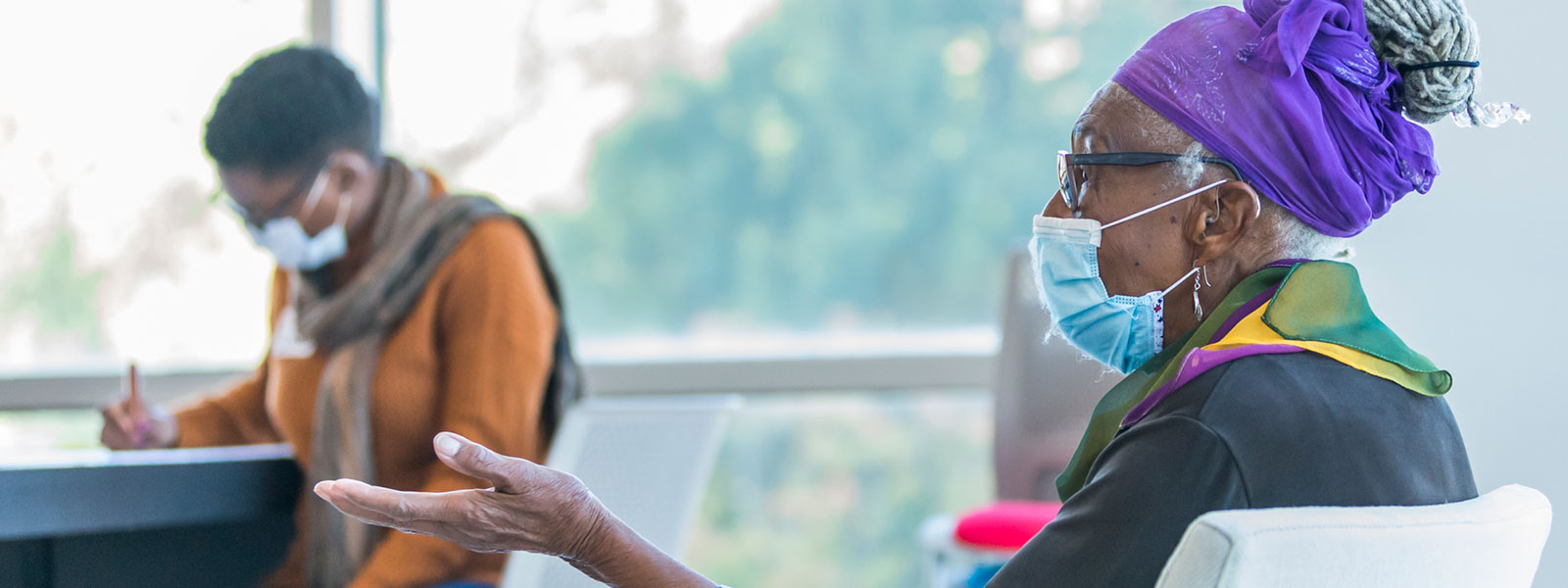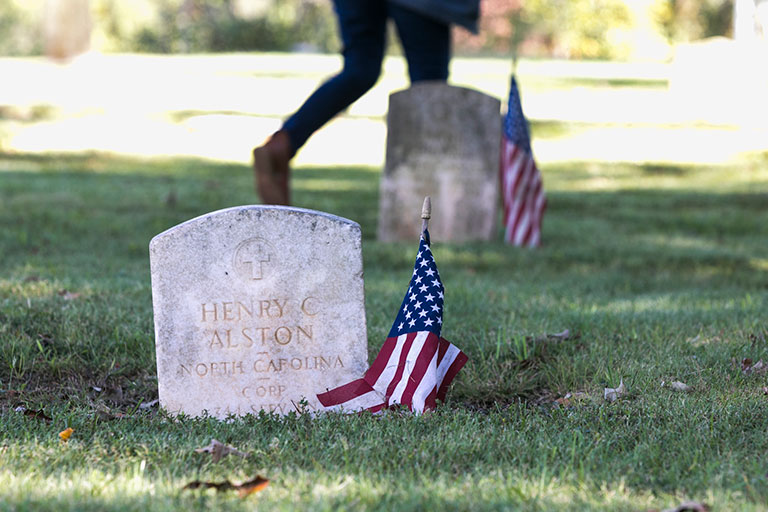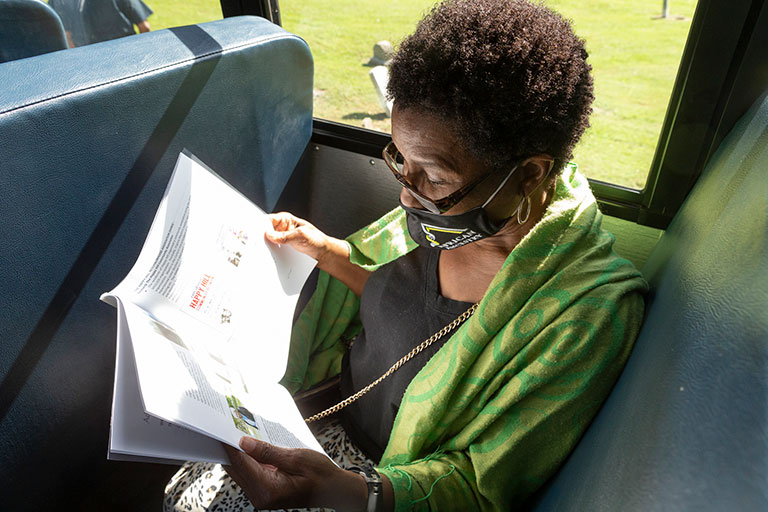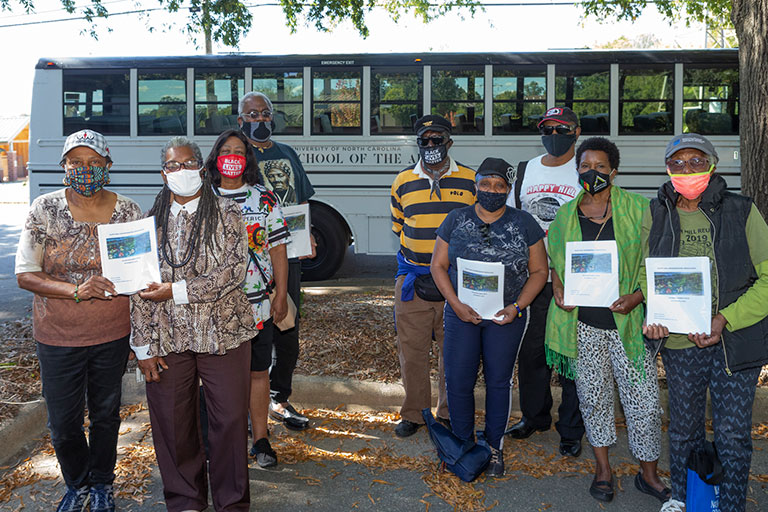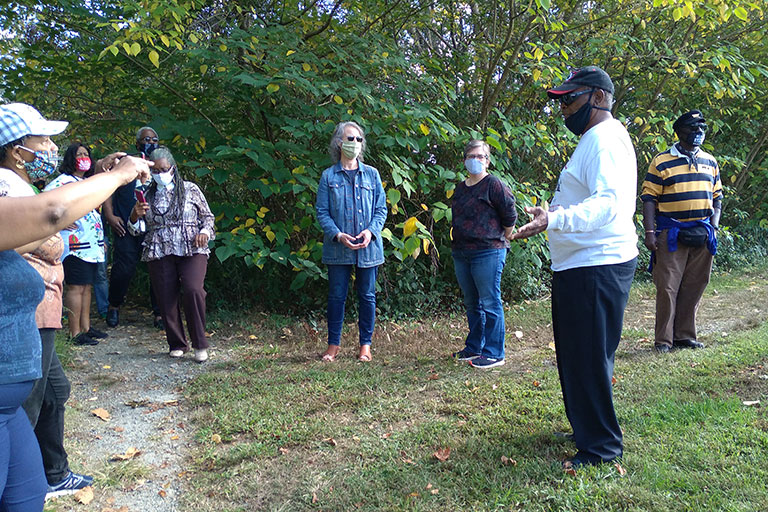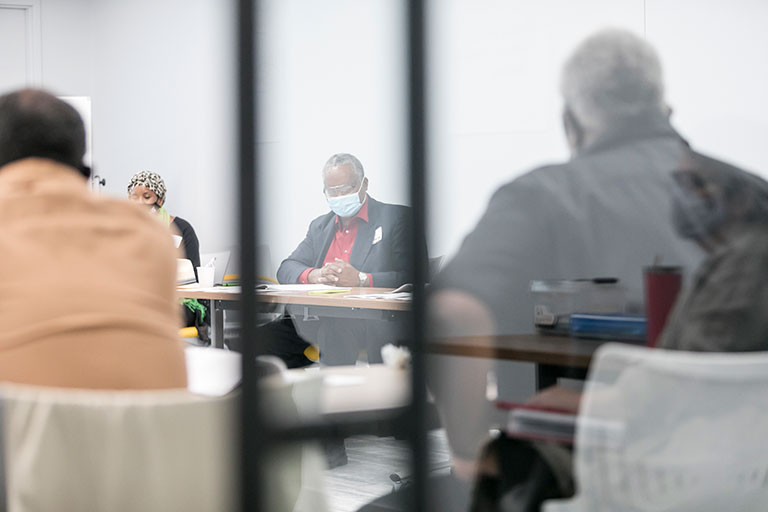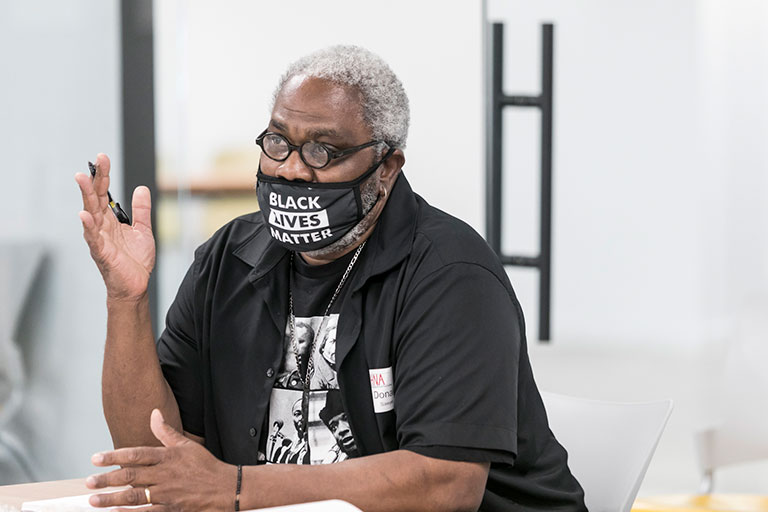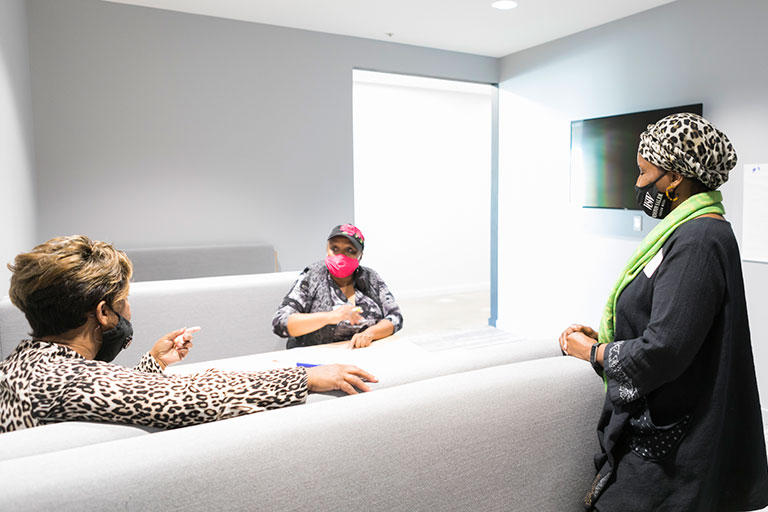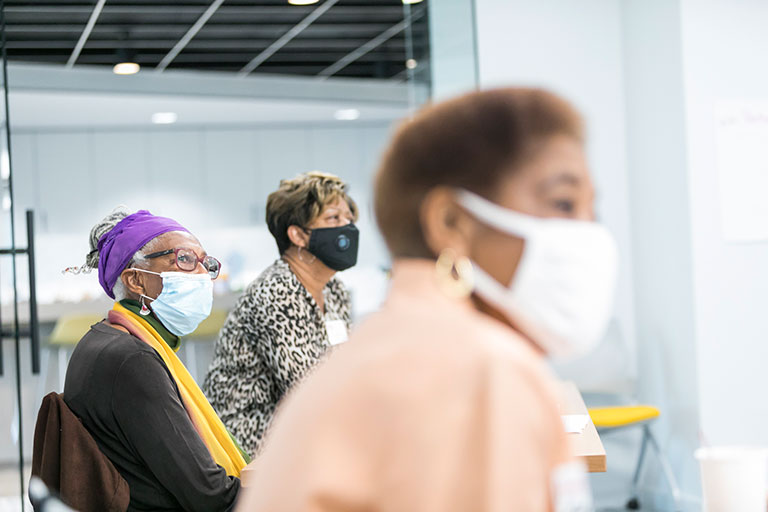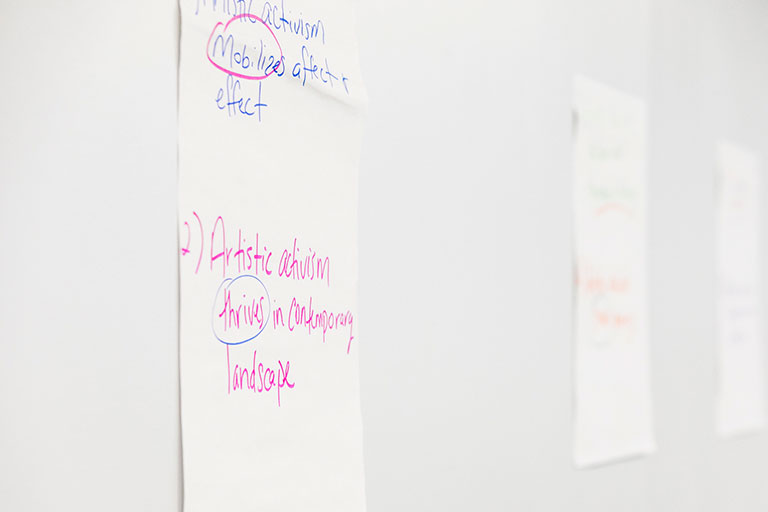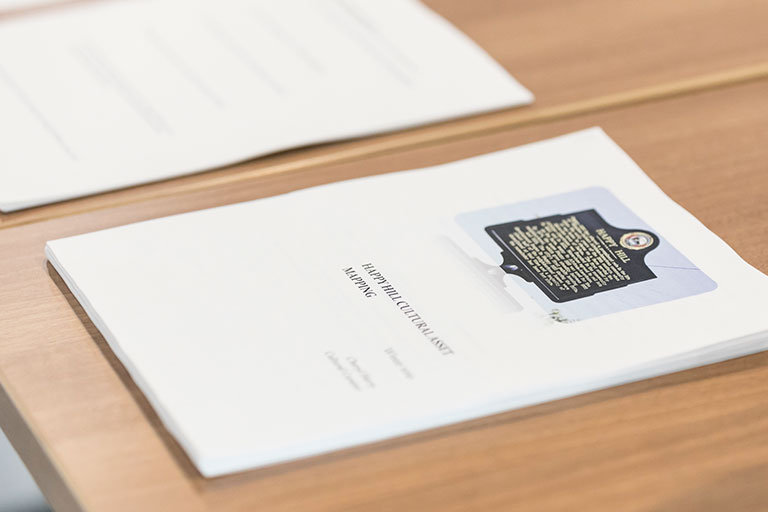Happy Hill collaboration produces action plan for community revitalization
In 2019, the Thomas S. Kenan Institute for the Arts at UNCSA, the Happy Hill Neighborhood Association and the Winston-Salem Department of Community Development began work on the Happy Hill Cultural Restoration Project, which was supported, in part, by a National Endowment for the Arts (NEA) Our Town grant and the Z. Smith Reynolds Foundation. The three-part, collaborative project included cultural asset mapping and community stakeholder meetings, and culminated in the Happy Hill Neighborhood Arts Action Plan. Despite the restrictions of the COVID-19 pandemic in 2020, the work supported by the grant concluded at the end of the year.
"This neighborhood is rich with cultural and historical significance, and the work of naming that significance is important — to strengthen those who live here and to share with the community at large," says Amatullah Saleem, President of the Happy Hill Neighborhood Association and co-founder of Happy Hill Arts. "It also reinforces the creative projects we've already started, and the ways in which recognizing and using art can help the community continue to grow."
Mapping a community's assets
The project began in 2019 with cultural asset mapping of the Happy Hill neighborhood. A core team of community members and stakeholders, in coordination with Cheryl Harry as the project's Cultural Curator, worked together to produce the map, which includes an inventory and locations of the community's tangible and intangible assets.
The core team for the mapping project included:
- Shirika McAlister – Current Happy Hill resident, dancer and owner of Kitchen Ashẻ
- Chanel Nestor – Former Happy Hill resident and adjunct lecturer of Rural Sociology at North Carolina A&T State University
- Darrell Slade – Writer, publisher and founder of No More Suits, LLC
- Marcus Harry – Social media/AV specialist and owner of Champion Carpet Cleaners
"The cultural asset mapping is an important tool for the Happy Hill Neighborhood Association and other stakeholders to take stock of this community," Harry says. "To see the tangible and intangible come together in this document is key in providing guidance for implementing the changes that have been articulated."
The document considers tangible assets as "historic properties/artifacts, artist networks, festivals and events, creative industries and occupations, arts programming, and other related activities that occur in Happy Hill" and intangible assets as "the stories and traditions that define Happy Hill’s unique identity and sense of place."
Among the locations on the map are portions of Happy Hill included in the National Historic Landmark (NHL) designation obtained by Old Salem in 2016, a series of historic markers, Happy Hill Cemetery (ca. 1880), Salem Farm/Schumann Plantation (1768/1815), Happy Hill Park and the William C. Sims Recreation Center.
Other assets include the Happy Hill Neighborhood Association (HHNA), Happy Hill Arts, the Happy Hill Reunion, historical exhibits at Diggs Gallery at Winston-Salem State University and Old Salem, and the development by Triad Cultural Arts, Inc. of two neighborhood shotgun houses into a heritage site.
"Working on this project has reaffirmed to me that Happy Hill is holy ground and we must lift this community out of obscurity," Harry adds. "These are optimistic people who can clearly see their aspirations for the present and generations yet unborn through a shady glass. But with help from restored outside resources and stakeholders, their vision can be realized."
Amplifying voices through community discussion
In Fall 2020, community members and other stakeholders came together with facilitator Jacinta White of Deeper Dive Consulting for two workshops — an introductory workshop conducted via Zoom and a second, in-person workshop held at the Kenan Institute's Creative CoWorks space — to discuss the cultural asset map and its recommendations and to complete activities to inform the development of action items for the final plan.
"Working with Happy Hill stakeholders was a joy," White says. "To see them create and articulate the vision they have for their community — one with such history, beauty, and richness — was inspiring."
Prior to the in-person workshop, stakeholders participated in a neighborhood bus tour, which was coordinated as a socially-distanced alternative to meetings and events within the community itself. The tour, led by HHNA Treasurer and Historian Kayyum Allah, included 10 stops at locations like the Happy Hill Historic Cemetery, historic shotgun houses, The Clock Tower (at Mock and Alder Streets), Sims Recreation Center and others. Attendees also identified existing creative spaces (and/or lack thereof) within the community and completed a feedback survey.
Among those in attendance at one or both of the workshops were residents of the Happy Hill neighborhood and members of the HHNA, Winston-Salem and Forsyth County officials and representatives, local historians, artists and representatives from the Kenan Institute.
"It is my hope that the role I was able to play as a facilitator for Happy Hill not only provided a space and structure for the stakeholders' long-held love for their community, but also a roadmap for what's next," White adds, "so the history and the promises of what's to come aren't lost in conversation, plans on a sheet of paper, or wishful thinking."
An arts action plan
Indeed, those conversations did contribute to the third and final component of the Happy Hill Cultural Restoration Project supported by the Our Town grant, an action plan. Developed with the assistance of Artspace Consulting, the Happy Hill Neighborhood Arts Action Plan outlines the project's work and puts forth recommended action items.
The Arts Action Plan lists four critical goals:
- Honor and share Happy Hill’s history and sense of place.
- Use arts and culture as a community engagement and economic development tool.
- Build cross-sector partnerships and collaboration through new programs and creative activities (e.g. area universities, Winston-Salem creative businesses/organizations, city agencies, etc.)
- Limit gentrifying impacts of new development.
To help meet those goals, the formation of two committees — the Creative Placemaking/Placekeeping Committee and the Advocacy and Outreach Committee — was recommended to lead the implementation of the Arts Action Plan. Action items were further divided into short-term (1-3 years) and long-term (3-7 years) priorities.
Among the short-term priorities listed are the designation of an outdoor space for a craft marketplace and creative placemaking activities, revitalization of The Clock Tower, a public art project to engage younger artists and partnerships with local organizations for mentorship, arts and education programs.
Some long-term priorities include the development of a Cultural Arts Center, utilizing vacant historical homes for arts programs and working with absentee landlords for more buy-in and support of the community.
"I have said many times that the arts can empower a community. That's what we're doing in Happy Hill."
Amatullah Saleem, President, Happy Hill Neighorhood Association
"I have said many times that the arts can empower a community," Saleem says. "That's what we're doing in Happy Hill. The support from the NEA grant and our partnership with the Kenan Institute for the Arts at UNCSA have taken the revitalization of this community into consideration and made it that much more palpable. We now have an exciting plan for what this process can be going forward."
February 09, 2021
